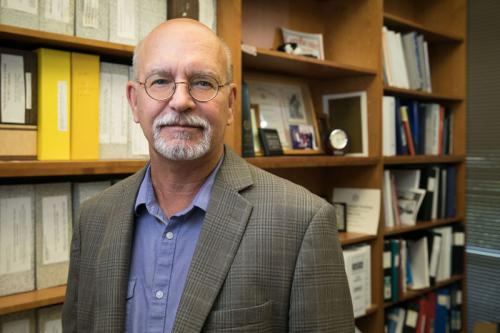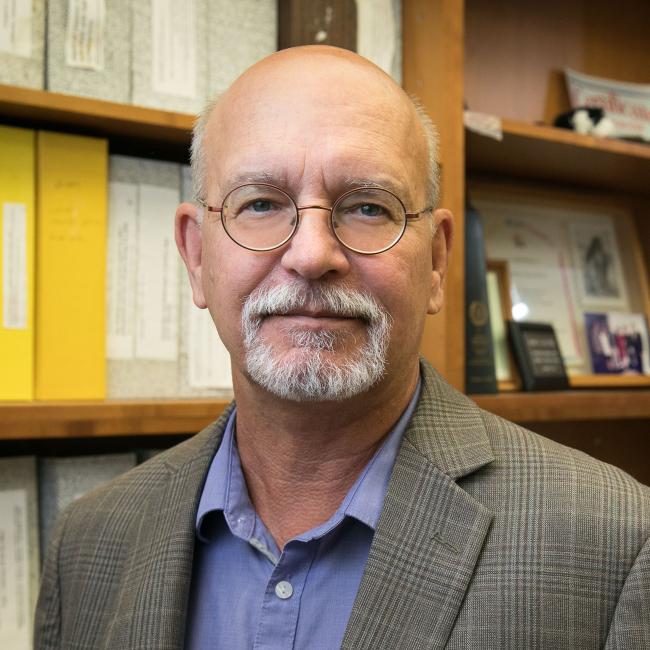
Member Spotlight: Jerome Zack has spent 30 years seeking a cure for HIV/AIDS
Meet Jerome Zack, co-director of the UCLA-Charles R. Drew University of Medicine and Science Center for AIDS Research. With the support of an $11 million grant from the National Institutes of Health, the Center is prioritizing research addressing health inequities that have contributed to the spread of HIV in marginalized communities.
“The Center for AIDS Research is starting to establish community-based partnerships across Los Angeles and in areas of the world most severely impacted by HIV,” Zack says. “By expanding ongoing research at both universities and forming these strategic community partnerships, our aim is to not only prevent new HIV infections, but decrease deaths among those living with the virus through education and providing greater access to quality healthcare.”
Zack is a distinguished professor and chair of microbiology, immunology and molecular genetics in the UCLA College, a professor of medicine at the David Geffen School of Medicine at UCLA and a member of the UCLA Jonsson Comprehensive Cancer Center and the Eli and Edythe Broad Center of Regenerative Medicine and Stem Cell Research at UCLA.
Tell us about your research.
The goal of our lab is to develop new therapeutic approaches to treat or cure HIV/AIDS. One method we’re working on would use patient blood-forming stem cells, induced pluripotent stem cells or embryonic stem cells to generate immune cells called natural killer cells in a dish in the lab. These natural killer cells would then be infused into a patient's body where they’d locate and kill HIV-infected cells.
Preventing HIV rebound after a patient stops taking antiretroviral drugs is another approach we’re pursuing. Many people with HIV stay relatively healthy by taking these drugs, but they don’t rid the body of the virus, which avoids being detected by the medications by lying dormant in certain cells. We’ve developed a “kick and kill” strategy that entices the dormant virus to reveal itself in HIV-infected cells while the patient is still on medication. Once the dormant virus “wakes up,” it begins to make viral proteins, enabling either the immune system or the virus itself to kill the cell harboring HIV. Our research team has recently shown that this technique has promise in mouse models, and now we’re conducting further studies to determine if this approach can be translated to treat people with HIV.
How has being a UCLA Broad Stem Cell Research Center member helped you as a scientist?
Besides receiving funding from the Center, I find the regular meetings and interactions with colleagues from different fields to be really valuable. You learn a lot that way because science is shared. Ideas in one field can feed ideas in another field, so it’s really exciting to be part of a group that’s so collaborative.
Have you always wanted to be a scientist?
I worked as a tennis instructor after finishing my undergraduate degree. I would draw vectors for my students to show them how to get maximum power on a shot, and I realized one day that I was essentially teaching them science. That was my “aha” moment. Tennis was my life up until then, but I knew I had to change my career plans because I was equally obsessed with science. I got a master’s in microbiology and then went on to complete a doctorate in immunology, and now here I am.
What motivates you to pursue your research?
When I was pursuing my doctorate in immunology, I worked in a lab that studied retroviruses. When the HIV epidemic hit in the 1980s, I realized that this new, dangerous virus killing thousands of people was at the intersection of everything I was working on. I felt strongly that if I was going to spend most of my life in a lab, I should be working to solve an important problem. An estimated 40 million people have died from AIDS-related illnesses since the start of the epidemic and approximately 38 million people worldwide are currently living with HIV. My belief that we can eradicate HIV/AIDS through research has motivated me all these years.
Where and when are you the happiest?
Well I can tell you that I’m never not happy. That’s my baseline. But at work, I’m happiest seeing a student grasp a concept for the first time. You can see the light come on behind their eyes and that’s very thrilling for me. As a department chair, I also enjoy helping young faculty members by providing them with funding or giving them opportunities to showcase their research. It feels good to be at a point in my career where I can now pay it forward.
Outside of work, I enjoy spending time with my family and two dogs, a senior golden retriever and a one-year-old rescue. We have a house in San Diego that’s right by the water with a rooftop deck that has a 180-degree view of the ocean. I love being up there, looking out into the ocean and watching our dogs wrestle each other.
What’s something most people might not know about you?
I’m trying to not always work. When I need to turn my brain off, I enjoy watching mindless TV like “NCIS” or reruns of “The Big Bang Theory.”
